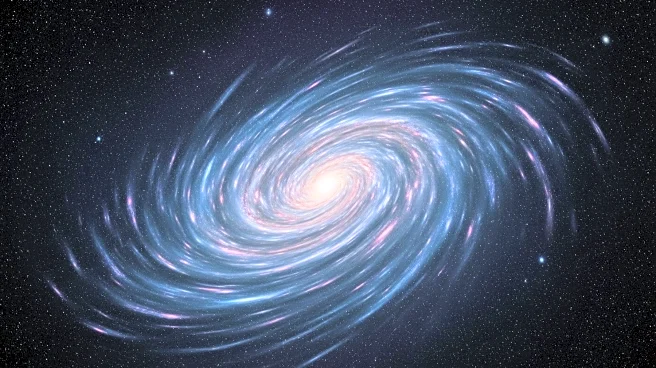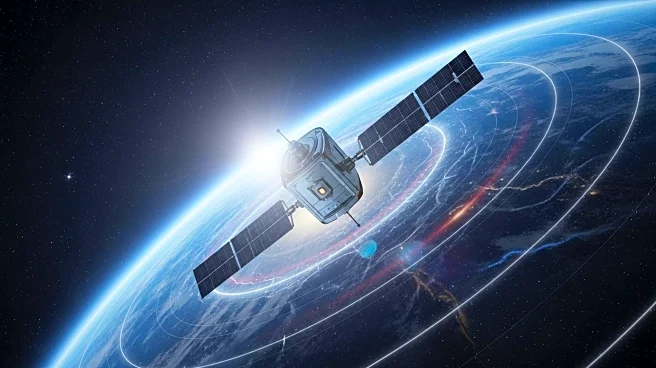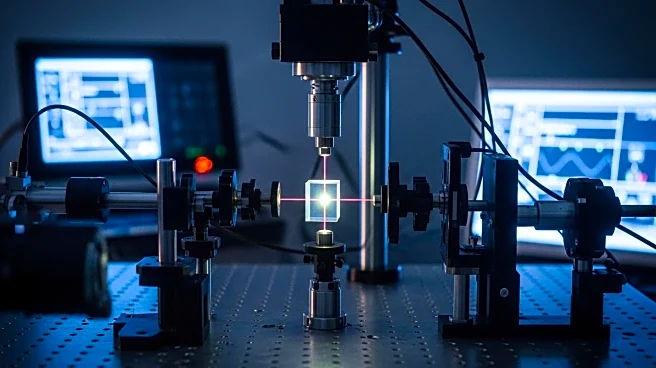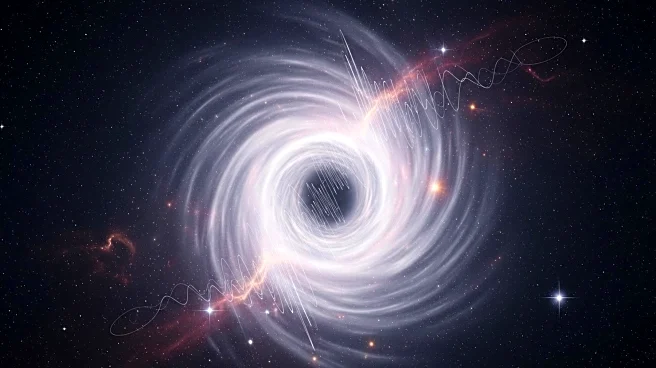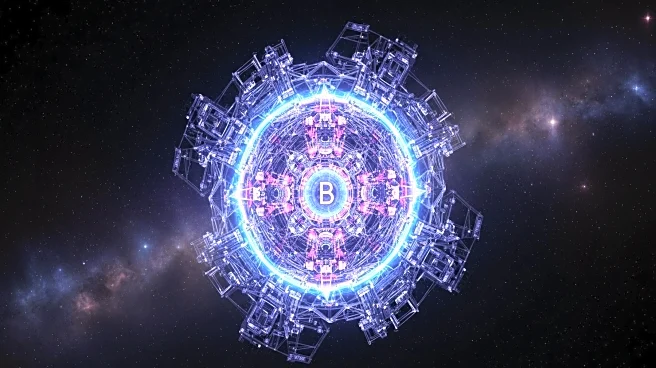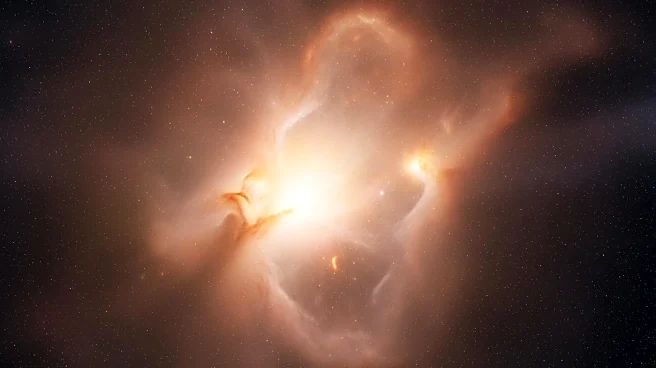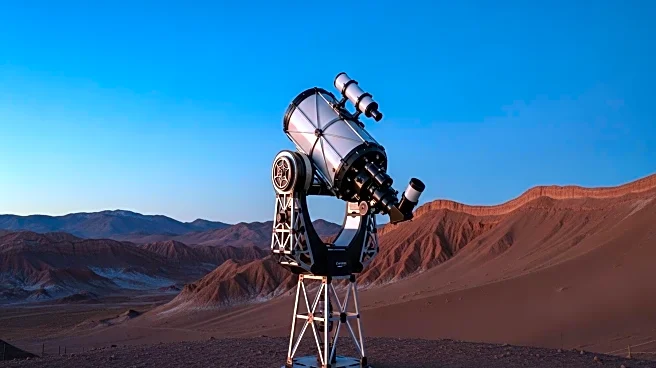What's Happening?
Researchers from the Universities of Birmingham and Sussex have introduced a novel detector concept aimed at identifying gravitational waves in the milli-Hertz frequency range. This development addresses a gap in current detection capabilities, as existing instruments like LIGO and Virgo focus on high frequencies, while pulsar timing arrays cover ultra-low frequencies. The new detector utilizes advanced optical cavity and atomic clock technologies to measure minute phase shifts in laser light caused by gravitational waves. Unlike large-scale interferometers, these compact detectors are less susceptible to seismic and Newtonian noise, allowing them to fit on a laboratory table. The technology, originally developed for optical atomic clocks, opens the possibility of establishing a global network of detectors to explore previously inaccessible astrophysical and cosmological phenomena.
Why It's Important?
The introduction of this detector is significant as it expands the scope of gravitational wave detection into a new frequency range, potentially revealing signals from compact binaries of white dwarfs, black hole mergers, and stochastic backgrounds from the early universe. This advancement provides immediate, cost-effective means to explore the milli-Hz band, complementing future space missions like LISA, which are scheduled for launch in the 2030s. By integrating these detectors with existing clock networks, researchers can extend detection capabilities to even lower frequencies, enhancing the understanding of astrophysical models and binary systems within our galaxy. This development could lead to breakthroughs in cosmology and astrophysics, offering insights into the universe's formation and evolution.
What's Next?
The proposed optical resonator detectors could begin exploring the milli-Hz frequency band immediately, providing a ground-based method to probe signals that would otherwise remain hidden for at least another decade. As space-based missions like LISA are still years away, these detectors offer a timely solution to advance gravitational wave research. Researchers aim to build a global network of these detectors, enhancing sensitivity and allowing for the identification of wave polarization and source direction. This initiative could pave the way for future space missions, offering a comprehensive approach to gravitational wave detection across various frequency ranges.
Beyond the Headlines
The development of these detectors not only advances scientific understanding but also poses ethical and cultural implications. As detection capabilities improve, researchers must consider the potential impact on privacy and data security, given the sensitive nature of gravitational wave signals. Additionally, the integration of these detectors with existing networks raises questions about international collaboration and resource allocation, highlighting the need for equitable access to scientific advancements.

